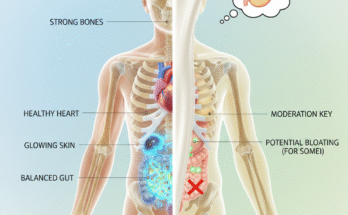Clinical Presentation of Congenital Heart Disease by Nancy Braudis. My name is Nancy Braudis, and I am a clinical nurse specialist in the cardiac ICU at Children’s Hospital Boston. Introduction. Children with congenital heart disease often present in one of three pathophysiological states. Low cardiac output.
This occurs when there’s a heart defect that obstructs the flow of blood from the heart, or when the heart muscle is unable to pump effectively.
Congestive heart failure. This often occurs when there is a heart defect that causes an increase in blood flow to the lungs. Cyanosis. This occurs when there is a heart defect that causes a decrease in blood flow to the lungs.
Cardiac Assessment. On admission, a full cardiac assessment should be completed. This includes a comprehensive history that should identify if there was a prenatal diagnosis or any significant birth and genetic history.
A complete set of vital signs should be done as a baseline, and a set of blood pressures in all four extremities should be done to evaluate for any gradient within the aorta. The physical exam includes evaluation of general color, body temperature, evaluation of heart sounds, and the presence of any murmurs, assessment of the liver will indicate if there is an overload of fluid on the right side of the heart, and the quality and strength of pulses.
Diagnostic tests should include a chest radiograph, an electrocardiogram. Other tests may include an echocardiogram or a cardiac catheterization. Low Cardiac Output. Signs of low cardiac output in infants and children include pale or mottled skin color, irritability, cool and clammy skin, or decreased level of consciousness, decreased urine output, capillary refill greater than three seconds, metabolic acidosis, hypoglycemia, and increased serum lactate. Other signs include weak pulses, temperature instability, or apnea.
There may also be evidence of organ dysfunction such as kidney or liver failure. Late signs include hypotension, cyanosis, anuria, and altered mental status. Interventions to improve low cardiac output include correcting the heart rate and restoring normal conduction within the heart, administration of fluids, correcting acid-base imbalance and electrolyte abnormalities, and using medications to improve the function of the heart and reduce the stress on the body. Congestive Heart Failure. Congestive heart failure occurs when the heart cannot deliver enough blood to meet the demands of the body.
The heart attempts to compensate by increasing the heart rate, thickening the walls of the heart to contract more effectively, or dilating the heart to increase the volume of blood within the heart to improve cardiac output.
Congestive heart failure occurs in 30% of infants and children with congenital heart disease and occurs in over 75% of children with complex heart disease. The causes of congestive heart failure include volume overload of the heart, pressure overload of the heart, and heart muscle dysfunction.
Some of the clinical signs of congestive heart failure include tachypnea, retractions, nasal flaring, diaphoresis, pulmonary edema, irritability, change in responsiveness, fatigue, poor feeding, failure to thrive, tachycardia, cool skin, decreased urine output, an enlarged liver, periorbital edema, pulmonary effusions, and ascites. Interventions for congestive heart failure include medications, such as diuretics to eliminate excess fluid, limiting fluid administration, and improved nutrition to maximize calories.
Other interventions include respiratory support to reduce the work of breathing and temperature control. Cyanosis. Cyanosis occurs when neonates are unable to tolerate the changes that occur when the blood flow within the heart changes after birth. Cyanosis may also occur in infants and children with congenital heart defects that cause a decrease in blood flow to the lungs. Cyanosis: respiratory or cardiac?
When cyanosis occurs with respiratory disease, the cyanosis usually decreases with crying, improves with oxygen administration, and there are usually signs of respiratory distress.
When cyanosis occurs with cardiac disease, the cyanosis usually increases with crying because the demand for oxygen increases, but the body is unable to deliver sufficient oxygen.
Cyanosis with the cardiac disease does not usually improve significantly with the administration of supplemental oxygen, and the infants usually breathe fast but do not have evidence of respiratory distress. Tests that can help in the diagnosis of the respiratory or cardiac disease include a 12-lead electrocardiogram, a chest radiograph, and a hyperoxia test that involves evaluating the oxygen content of the blood with and without supplemental oxygen.
Point of clarification.
Hyperoxia test. The basic physiology of the hyperoxia test is that you are going to use supplemental oxygen to distinguish between cardiac and pulmonary causes of cyanosis.
Specifically, the way that the test is done is that you obtain a preductal arterial blood gas in the cyanotic patient. So that is typically a radial arterial blood gas to measure the oxygen tension in arterial blood on room air.
You then place the patient in an oxygen-rich environment.
So that’s at 100% oxygen for 10 minutes. That can be either via a ventilator or via an oxy hood. After 10 minutes of breathing in an oxygen-rich environment, you repeat the blood gas predictably– so the radial arterial blood gas– and remeasure the partial pressure of oxygen in arterial blood.
Typically, the cutoff that we use here at Children’s Hospital Boston is a PaO2, in your arterial blood of greater than 150 indicates a high likelihood of a known cardiac cause of the cyanosis, such as pulmonary venous desaturation.
A PaO2 of less than 150 is very suspicious for a cardiac cause of cyanosis as a right-to-left shunt cannot be overcome by the provision of supplemental oxygen.
Degraded further, we consider a PaO2 of less than 100 very suspicious for cyanotic congenital heart disease, and this should trigger cardiac consultation.
Signs of cyanosis with congenital heart disease include bluish discoloration of the skin and mucous membranes, increased respiratory rate and effort, irritability, or lethargy. Other signs include decreased blood flow to the body, decreased urine output, and metabolic acidosis.
Long-term effects of chronic cyanosis include an increased hematocrit, thickening of the blood, increased risk of clot formation, clubbing of fingers, and an increase in the release of oxygen to the tissues. Interventions to reduce cyanosis include maintaining a high hematocrit to maximize oxygen-carrying capacity and fluid administration to reduce the thickness of the blood.
Other interventions include the administration of supplemental oxygen– close monitoring for air in intravenous infusion lines is essential to reduce the risk of air traveling to the brain in an infant or child with cyanotic heart disease– and using alprostadil in neonates to keep the ductus arteriosus open to allow mixing of blood within the heart. Please help us improve the content by providing us with some feedback..
As found on YouTube


